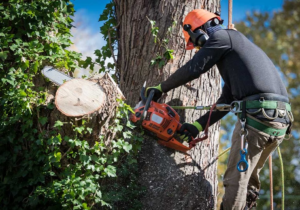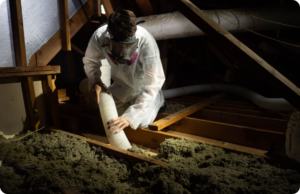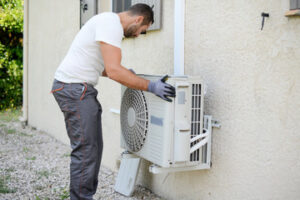Sublimation printing opens up a world of creative possibilities, transforming products like fashion, personalized gifts, branding, and photography. This powerful technology has revolutionized industries by creating vibrant, durable prints.
A highly flexible and economical dye-sublimation transfer paper optimized for various applications. Suitable for textile and rigid substrates. It offers high ink transferability with an extremely low cockling base. Click Epson Sublimation Paper to learn more.

Garment decoration via transfer paper is relatively simple and carries one of the industry’s lowest start-up costs. However, compared to sublimation printing, it is limited in fabric choices (as it only works on polyesters) and requires the use of a plotter or vinyl cutter for precise cutting and weeding of intricate designs.
In contrast, sublimation uses heat to change solid substances into gaseous forms that are instantly transferred onto polyester fabrics and hard surfaces using a printer equipped with a special ink cartridge. The process is easy to learn and offers many advantages, including high-definition prints, durable designs and an eco-friendly process.
Sublimation is also a versatile method for printing, allowing you to decorate both soft and hard items. The key to success is choosing the right printer, inks and paper. Getting these components in sync is critical to maximizing your productivity.
Designed specifically for decorative ink transfer to hard substrates and polyester-based textiles, the Epson DS Transfer Multipurpose Paper is ideal for businesses with varied applications. It features a low-cockling base and is compatible with Epson UltraChrome DS inks as well as third-party RIP systems for maximum business flexibility.
This top-quality dye sublimation paper has a low-cocking coating that maximizes ink transfer to the product, reducing waste and boosting productivity. It also helps reduce ink bleed on the surface of the product and provides smooth, even imaging, resulting in vibrant and crisp images.
The watermarked backside of the DS Transfer Paper aids in correctly positioning and aligning the substrate prior to pressing. This feature saves you valuable time and helps to eliminate production errors. It’s also available in a variety of sizes, allowing you to create custom products for each customer and ensure that the results match their expectations.
Improper printing on the non-coated side of the DS transfer paper can result in failed transfers, poor image quality and wasted materials. To avoid this, always make sure you’re printing on the correct side of the paper by using visual, touch or marker test methods to determine which side is up before placing it in the printer.
High-Quality Printing
When paired with the right printer and ink, this paper can help you achieve vibrant and durable prints that are sure to impress. It is designed to work seamlessly with Epson sublimation printers and features a high transfer rate to ensure your designs don’t smudge. You can find it in a range of sizes to suit your needs, including those that are ideal for soft and hard surface printing.
This paper is ideal for all soft and rigid surface applications, including t-shirts, tote bags, socks, and more. Its wide color gamut and smooth gradation capabilities make it perfect for a variety of design styles, and the low cockling base allows for optimal print performance. It also resists wrinkles, creases, and smudges well, so it can handle even the most demanding production environment.
The A-Sub 125 GSM sheet is compatible with a number of Epson dye-sublimation printers and is regarded as one of the best sublimation papers in the industry. It provides high ink transfer efficiency and has a very competitive price point, making it ideal for businesses that need to provide customers with a wide variety of products. It also has a high temperature tolerance, allowing it to be used for both soft and hard-surface projects.
It’s important to note that not all sublimation papers are created equal, and the quality of your print can greatly depend on what type you choose. Look for a high-quality paper that has been tested and approved by reputable manufacturers and distributors to guarantee the best results possible.
In addition to the quality of the paper, you should always look for a printer that is compatible with your specific business needs and applications. For example, some printers are better suited for printing photo or graphic images, while others have special features that are more suitable for producing heat-resistant textiles. It’s also important to consider the amount of energy you need your printer to use, as this can influence your operating costs.
Additionally, if you’re looking for a reliable, high-quality dye sublimation printer that will meet the demands of your business, consider purchasing a model with an advanced MicroPiezo print head. This technology uses piezoelectric elements to precisely eject ink droplets, which helps to create detailed and accurate images. In addition, it reduces waste by limiting the amount of ink that is soaked into the paper.
Easy to Use
Unlike heat transfer paper, which can only be used on a limited range of fabrics and hard surface substrates, sublimation paper can be used to decorate virtually any type of fabric or object. This flexibility and wide array of potential applications make sublimation the preferred printing method for many personalization business owners. In addition, it is also a more durable option than vinyl. However, sublimation can pose some challenges that are unique to this type of printer, including a high upfront investment and the need for specialized inks and heat presses. Fortunately, there are steps that can be taken to minimize these issues and ensure quality results.
The first step is to choose the right printer for your needs. You can either opt for a purpose-built sublimation printer or convert an inkjet desktop printer into one. Epson offers a variety of sublimation printers designed to simplify ease-of-use and save costs while improving print quality. For beginners, it is best to start with an Epson EcoTank model, such as the 2800 or 2803. These printers feature a MicroPiezo print head that uses quick vibration and flexion to apply pressure to the substrate. This helps ensure that the ink is deposited evenly and without smearing.
Next, select the proper sublimation ink and paper. High-quality sublimation ink is essential, and Epson offers several options for both textile and hard surface projects. It is important to use the correct setting for your printer and substrates, as this will help to avoid clogged print heads and inconsistent ink flow. It is also vital to regularly clean and maintain the printer head. This will help prevent smudging and reduce the risk of inconsistencies with color and saturation.
Another important factor is to determine the correct side of the paper for printing. This can be done by visual inspection or the touch test. The best way to identify the printable side is by examining the paper for a logo or watermark on the non-printable side. Using the wrong side of the paper can cause failed transfers and wasted materials, so it is important to be able to correctly identify the appropriate side of the paper prior to beginning the printing process.
Long-Lasting
As you likely know, sublimation printing can produce some truly stunning results. It can be used to create a wide range of soft and hard surfaces, including fabrics, ceramics, and metals. It works by converting solid dye ink into a gas that can be transferred onto polyester or other polymer substrates. It’s a highly efficient process that produces superior results when using the right materials and printers.
Choosing high-quality paper, ink, and fabric are all important factors to consider when choosing the right sublimation printer for your business. This will directly impact the final quality of the printed product. However, it’s also important to remember that proper maintenance and storage practices can also make a significant difference in the longevity of your sublimation printing.
One of the most common issues that can occur with dye sublimation is print fading or ghosting. These problems can be caused by a number of factors, such as smudging and clogged printheads. To avoid this, it’s important to follow proper care and storage guidelines, protect prints from sunlight, and perform regular printer maintenance.
Another way to prolong the life of your sublimation printer is to use only high-quality inks and paper. This will help to prevent fading and smudging while ensuring that your prints come out with the best possible color accuracy and consistency. It’s also vital to ensure that you are printing on the correct side of the paper to prevent wastage. This can be done by checking the paper’s surface using visual or touch testing methods.
In addition to these tips, you should also take the time to understand what types of printer settings are best for your specific project. For example, if you’re printing on hard surfaces, it may be best to set your printer to the “premium presentation paper matte” or a similar setting. This will ensure that the ink is transferred to the surface of the paper rather than remaining soaked into it, which can lead to smudging.
While heat transfer printing is a great option for producing many different types of apparel, it’s important to consider the long-term durability and quality of your finished products. Dye sublimation offers a more durable and longer-lasting result than heat transfer, especially when combined with premium-quality fabrics.



